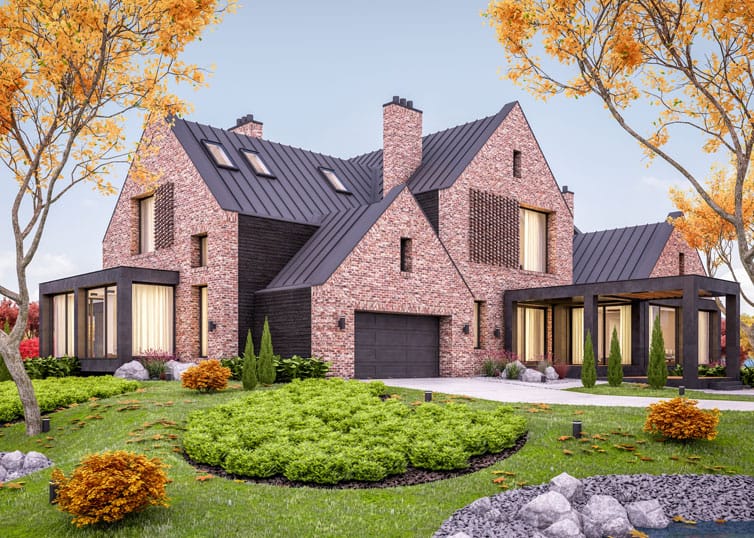
Summarizing the best features of a property with an intriguing real estate description is just as important as great photography. Though writing real estate listing descriptions for high-end North Carolina homes can be daunting, there are ways to ensure that your copy is effective. To reflect the nature of the home, be sure to put extra care into illustrating the magic of an upper-tier home.
Here are seven tips to help you craft the best possible luxury real estate descriptions for your high-end listings.
1. Frame the story carefully
Before diving into a description, think about how you would like to frame a given property. The same North Carolina luxury home could potentially be marketed as a spacious living situation ideal for entertaining, or a family home with the potential for a playroom or nursery. While it’s usually a good idea to allow the buyer to picture themselves in the home by keeping the description vague, sometimes it helps to get specific. Especially for homes with defining qualities, try framing them accordingly.
Here are some examples of framing with a given feature of a house:
- Large pool—Summer spot perfect for throwing pool parties
- Tree house—Whimsical family home with a backyard full of wonders
- Wine room—Wine collector’s paradise
2. Choose a strategic title for luxury real estate descriptions
Building on the idea of framing, choosing a title that grabs your intended audience is crucial to writing a successful description. After all, it’s not helpful to have a cohesive and well-written copy if nobody reads past the title. Consider using unique adjectives, or at least adjectives other than “beautiful,” “awesome,” or “amazing,” as they will make the title stand out. If a home is rare for the area in terms of either price or features, try adding “‘rare” to the title. Additionally, try to avoid rambling phrases and opt for a concise title instead. Getting key information into a title is important, but making a title too long also impairs the effectiveness. As a general rule, aim for 5-10 words in a title.
3. Hook the reader with your introduction
If you get readers past the title, it’s important to try and hook them further into reading the details of the property. This opportunity lies in the first sentence. Try to pack in as many details as possible while still remaining coherent. Including the area of town, the number of rooms, nearby local spots and any recent updates or modifications that add value in the first sentence is often enough to get readers to continue reading. Scan through the headlines of similar luxury real estate listing descriptions and pay attention to what grabs your attention.
4. Pay attention to word choice
The vocabulary you choose to use sets the tone for the value of the home, especially when dealing with luxury real estate. Paint the picture of a lavish property by using tactile imagery. Being selective with word choice allows the reader to picture themselves in a given property, which could ultimately make them more likely to request a tour. Check out a thesaurus for ideas if you’re stuck.
Remember: It’s probably a good idea to avoid excessively abstract or confusing vernacular when considering word choice. Trying too hard to sound overly intelligent when writing copy can result in the reader feeling belittled and confused about what the property actually has to offer. As a general rule, keep it simple.
5. Use photos as a guide
Though the emphasis of advertising a property online is usually placed on the photographs, the right wording is just as important. When writing luxury real estate descriptions, try playing off the pictures to create the most cohesive copy. Tell the story of the home with the help of both written details and photos of that detail, displaying a clear image to the potential buyer.
If nothing else, make sure that the features mentioned in the copy are included in the pictures. It doesn’t cost anything to add as many pictures as desired on sites like Zillow and Trulia. So if you mention a particular feature in your listing description, try to include a photo of that feature as well.
Interested in starting a real estate career in North Carolina? Download our free Career Starter Kit.
6. Cater to your audience using buzzwords
“High-end homes” can mean different things to different people. Are you looking to list a beach house? A family-friendly home in a prestigious neighborhood? Regardless of the type of home, try to think of the buzzwords your audience is looking for. For example, the buyer for a family home will probably be attracted to being close to nearby schools. The buyer for a high-end home on the beach might be looking for a place with ocean views. Put yourself in the shoes of the buyer when writing copy, and include the most important buzzwords, as they might even be filtering their property search based on one or two words.
7. Inspire action with verbs
This literary trick is an industry standard. Do you currently have a luxury property that hasn’t sold? Try starting the copy with an action-oriented phrase. For example, you could write, “Retreat from the busy city to this country getaway” or, “Soak up the sun with this beach house paradise.” It may seem like a small detail, but adding this touch can add urgency to a listing and make a buyer feel like locking it down more quickly.
Now that we’ve discussed some tips for making your luxury real estate descriptions more effective and polished, have fun with it! Whether you’re putting together a property brochure or writing an online ad, great copy can catch the eye of prospective North Carolina luxury buyers and ultimately help you list and sell more high-end properties.

